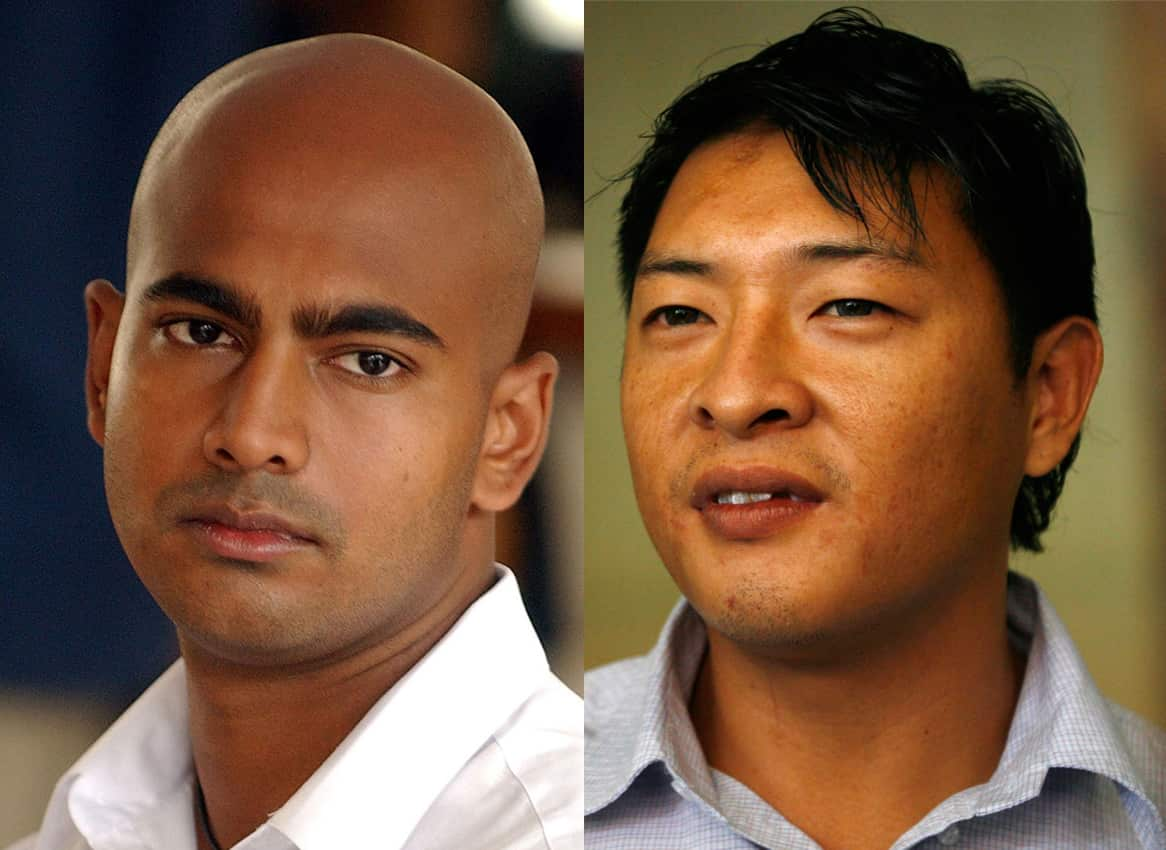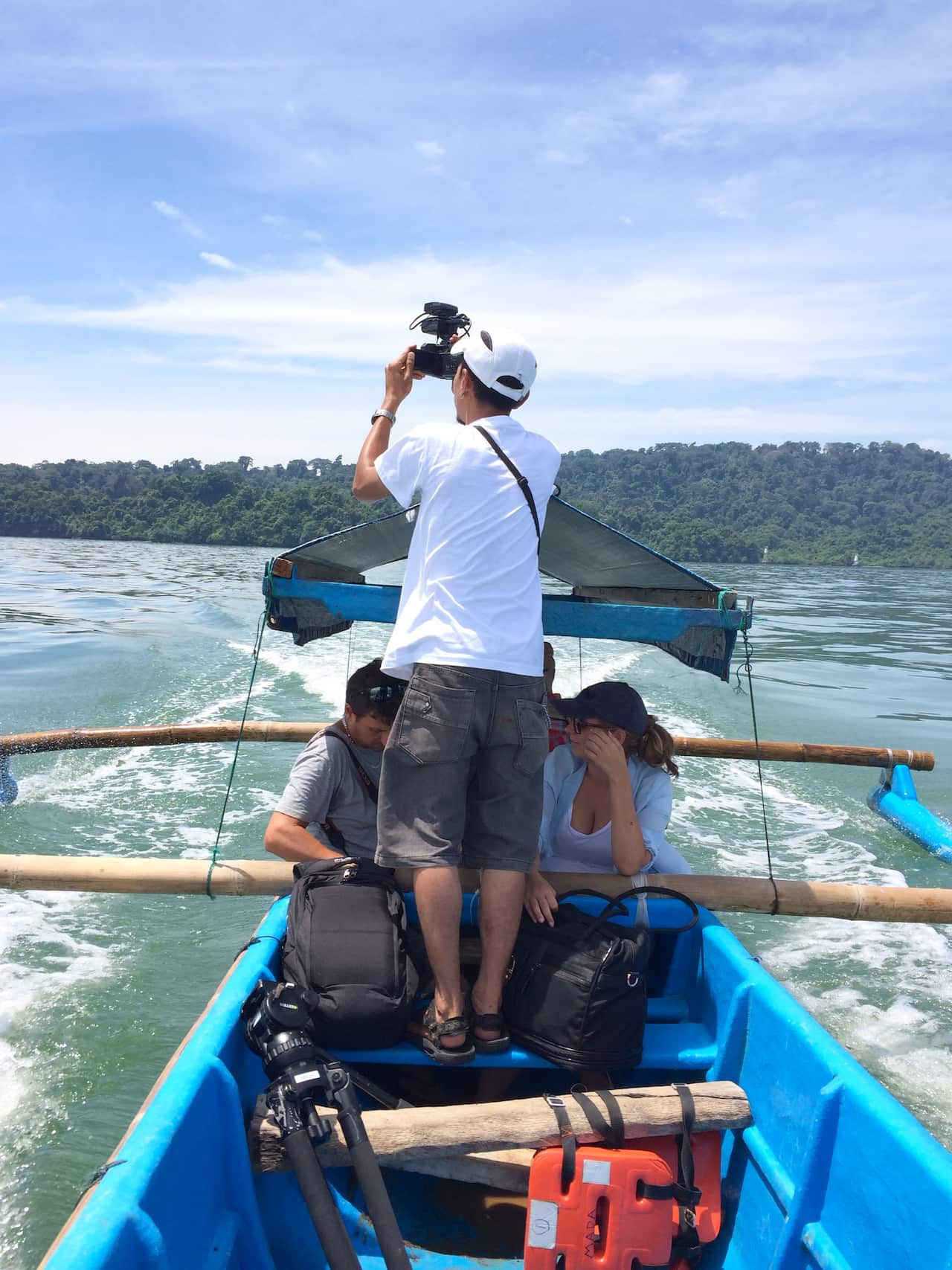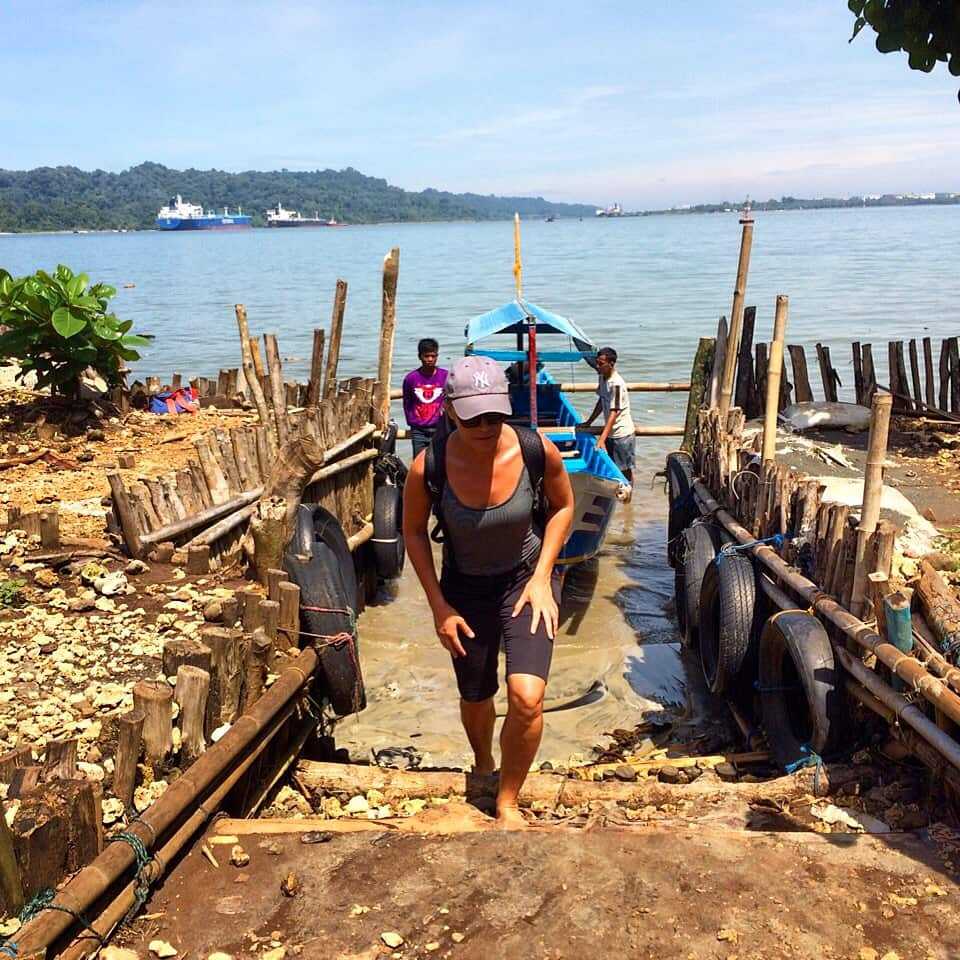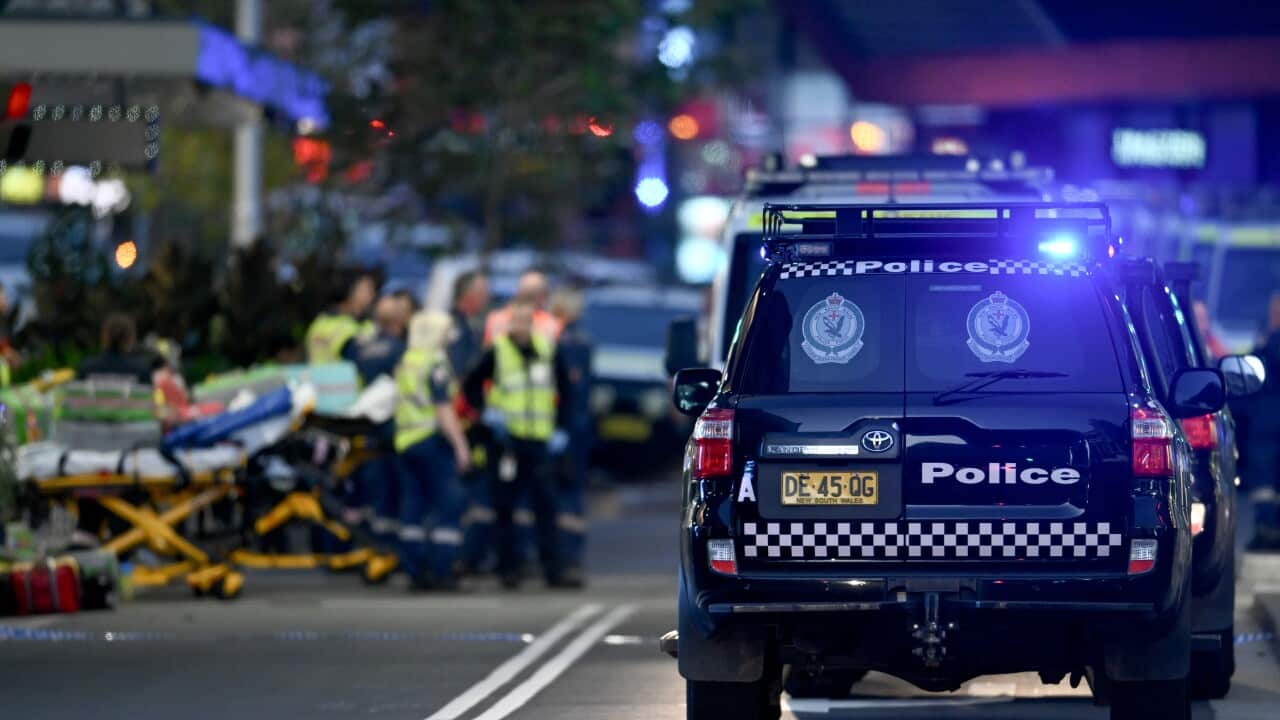You can see Nusa Kambangan from the port town of Cilacap, where I am staying.
The island is surrounded by calm, somewhat inviting waters - it's 30 kilometres long, seven kilometres wide and separated by a narrow strait from the southern coast of Central Java.
My Indonesian cameraman and I paid 50 thousand rupiah each (A$5) to make the 15 minute boat journey to an area on the north-eastern side of the island, usually open to tourists.
It's not far from seven prisons, four of which are still used - where around two thousand inmates - including convicted terrorists, murderers and political dissidents are held.
Among them are Andrew Chan and Myuran Sukumaran. They will face the firing squad alongside eight others convicted of drug offences if their pleas for mercy continue to be ignored.
Death row inmates are routinely rushed to shooting fields at midnight, blind folded and asked to stand, sit or kneel, before being simultaneously fired at by 12 executioners. Local tourist Ogy Subargandi said he understood why foreigners call Nusa Kambangan 'execution island'.
Local tourist Ogy Subargandi said he understood why foreigners call Nusa Kambangan 'execution island'.

(AAP)
"For people outside Cilacap, people hear 'wild animals, scary, prisons, executions'. That may be the case but that's for the other side of the island. Not here, [where there's] plenty of tourism potential for people who love beaches," Mr Subargandi said.
Nusa Kambangan is well known locally for its beautiful beaches and caves, dense forests and wildlife - many animals are endangered or extinct on the main islands.
A maze of old Portuguese-built tunnels are also a draw card. "I am here with my university friends. Because it's less crowded, the sand is white, unlike the black sands at Cilacap," Mr Subargandi said.
"I am here with my university friends. Because it's less crowded, the sand is white, unlike the black sands at Cilacap," Mr Subargandi said.

Portuguese-built tunnel on Nusa Kambangan.
We were hoping to see the same sights. From the small wooden boat we were travelling in, the scenery was truly spectacular.
Ari, my cameraman, who comes from Denpasar in Bali, tried to return to the island the following day. He was refused again despite being Indonesian.
Upon hitting the shore, we saw a scattering of small food stalls, and a few gem sellers.
But no sooner had we stepped off the boat, our skipper Gendon was told to turn back by tour operators.
"No foreigners. Locals yes, but no bule (foreigner). They are not permitted. The authority said no," Gendon said. We were urged to return to the mainland and check in with Cilacap police, who simply tried to move us on to other parts of the town of interest to tourists.
We were urged to return to the mainland and check in with Cilacap police, who simply tried to move us on to other parts of the town of interest to tourists.

Ari, my cameraman, who comes from Denpasar in Bali, tried to return to the island the following day. He was refused again despite being Indonesian.
Such is the cautious approach to foreigners that has developed since the two Australians on death row arrived here from Bali's Kerobokan Jail a week and a half ago.
A disappointing result for us, but also for local workers, who earn their living from visitors. They say their incomes have been halved since the latest round of executions was announced.
Tourism is suffering
Gendon says it's getting hard to feed his family.
"Usually in a day I get three hundred thousand rupiah (A$30) or two hundred (A$20). If more tourists I can earn more. During holiday I can earn more, four hundred thousand (A$40) to fifty thousand (A$50)," Gendon said.
Boat operator Handoyo has been working on and off the island for 30 years, and gave a similar response.
"I work from 6am to 4pm. Sometimes I'm a fisherman. While the executions [are being] plan[ned], it's down. Last week 'til this week, it's down. Last Monday and Tuesday I earn nothing. No one hired me," Handoyo said. The increased military and police presence here is concerning to local residents. A couple of kilometres to our left, two Indonesian warships are anchored.
The increased military and police presence here is concerning to local residents. A couple of kilometres to our left, two Indonesian warships are anchored.

Gendon said there's talk among locals submarines are patrolling nearby, but he isn't sure.
"Sometimes there is warships patrol because of this execution. Normally no warships. They control security on sea," Gendon said.
Nusa Kambangan is the main location for capital punishment around the Java island. It was made into a prison island in 1908 by Dutch colonists.
A high security prison was opened in the mid-1920s, and was once considered the harshest penal institution in South-East Asia. Its use as a prison continued after Independence.
During the rule of Indonesian President Suharto, hundreds of political dissidents were imprisoned on Nusa Kambangan. Many were never brought to trial and died from hunger or illness.
More recently, the three men convicted over the 2002 Bali bombings - Imram Samudra, Amrozi and Ali Guffon - were imprisoned and then executed here in 2008.
Tommy Suharto, the son of the former president, also became an inmate after masterminding the murder of the judge who sentenced him for corruption. In late 2014, President Joko Widodo announced executions for people on drug related offences would resume.
In late 2014, President Joko Widodo announced executions for people on drug related offences would resume.

His hardline drug approach has attracted much international publicity.
On January 18th this year, five foreign drug criminals were shot. Chan and Sukumaran are expected to face the same fate.
The executions have saddened some locals, but many support the penalties imposed on narcotics traffickers.
They see Nusa Kambangan as a proud symbol in the fight against drugs.
Boat operator Handoyo says he's worried visitor numbers will keep dropping.
"I am getting 50% less. For normal situation on tourism spot, 30% are Western. Now we have none," Handoyo said.
In 1996, the island was opened as a tourist destination.
Unlike the San Francisco Bay jail, dozens of Nusa Kambangan prisoners have escaped. In May 2013, a Malawian drug smuggler did so, leading to the immediate executions of three Indonesian murderers.
The Cilacap government invested one point seven billion rupiah - around A$200,000 dollars - in preparation.
Most of the island's three thousand residents are prison staff and their families.
Fishing is one of the main industries. Rubber and teak plantations also offer work for residents, but almost 40 per cent of the island has been spoiled by illegal logging and land clearing.
The prison - not quite 'Alcatraz'
Although the comparisons will continue, Nusa Kambangan is really world's apart from the infamous "Alcatraz".
Reports have emerged prisoners are allowed to wander the beaches - under the watchful eye of guards - while others polish rocks to sell to visitors.
And unlike the San Francisco Bay jail, dozens of Nusa Kambangan prisoners have escaped.
In May 2013, a Malawian drug smuggler did so, leading to the immediate executions of three Indonesian murderers.
In September 2001, more than 90 Afghan refugees managed to sail away in fishing boats.
A month earlier, 140 were detained after their boat en route to Christmas Island, sank.
While we may not have secured an island tour, we made ground, and left feeling we knew a little more about a place far beyond the bright lights and Bintangs that most Australians come to know Indonesia for.









